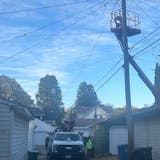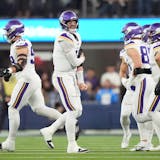Even Neel Kashkari thinks it's time to raise interest rates.
Since he became president of the Federal Reserve Bank of Minneapolis in 2016, Kashkari has consistently opposed rate increases and became known for holding the most dovish views of the central bank's policymakers.
But amid some of the highest inflation in decades, Kashkari on Tuesday said he supports raising rates this year — but twice, not the three times the Fed signaled on Dec. 15.
In an essay published on the Minneapolis Fed's website and in comments at a virtual event, Kashkari explained what led him to change his view.
"The truth is [that] inflation has been higher than I expected, and it has lasted longer than I expected," he said during the event hosted by the Wisconsin Bankers Association. "So, the key question is, 'Is it still going to be transitory or not?' How long is it going to last?"
He is still convinced that higher prices will be temporary and the economy will eventually return to pre-pandemic low inflation. But there's a risk that it might not if expectations begin to diverge from the 2% goal the Fed has set for inflation, he said.
"If long-term inflation expectations go up, that could then lead to and become a self-fulfilling prophecy of high inflation in the future," he said. "That could be very costly to the economy and to families and to communities."
At the same time, if the Fed overreacts to the current environment, it could needlessly slow the recovery. So he said it's important that the Fed closely monitors the data as it makes decision in the coming months.

